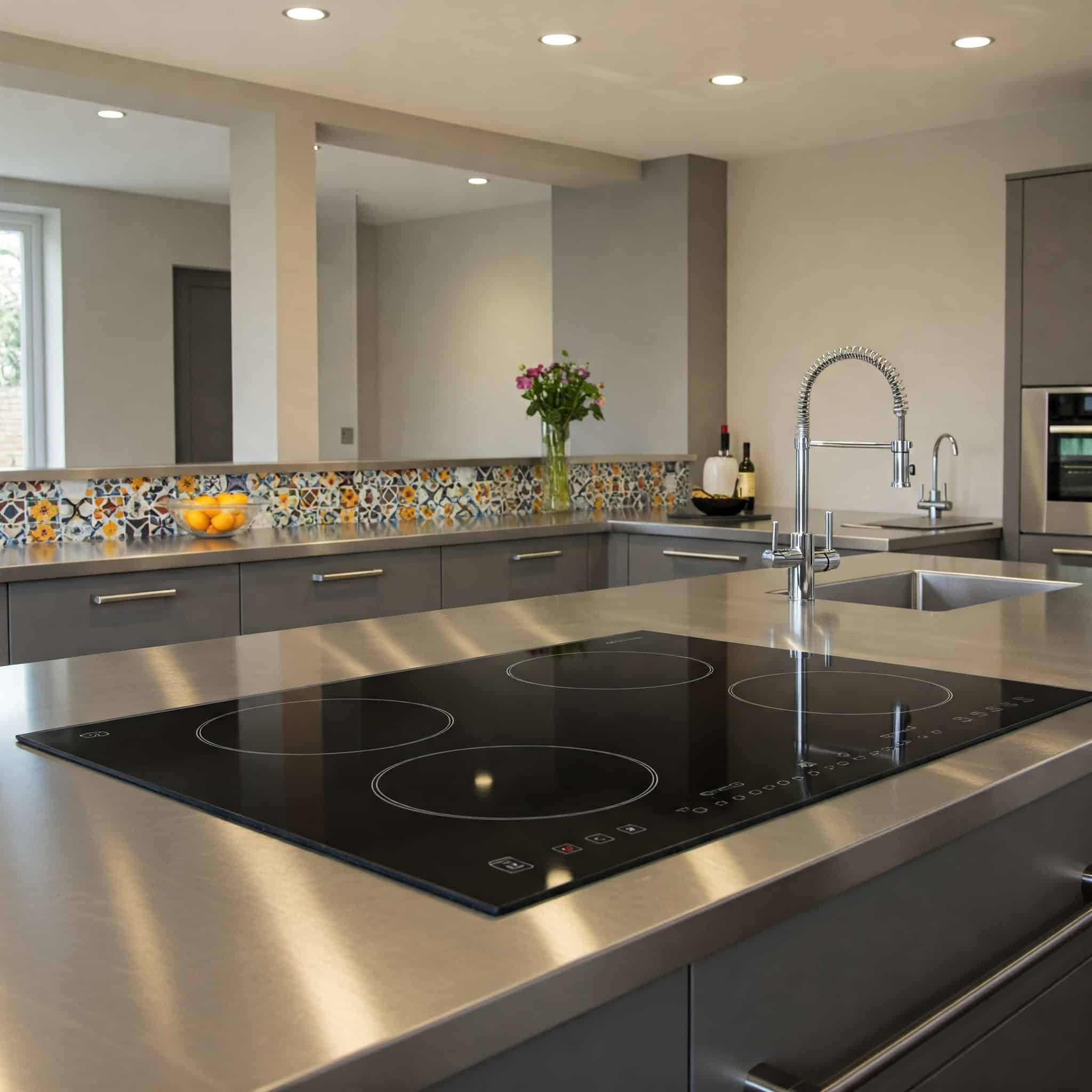
Question: What Is the Difference Between an Induction Oven and a Regular Oven?
Answer: Differences between an induction oven and a regular oven include induction ovens use electromagnetism to directly heat cookware, while regular ovens use radiant heat from electric elements or gas flames to heat the air around the food.
Induction Ovens vs Regular Ovens
Many people use conventional ovens for everyday cooking. These ovens use radiant heat to cook food. But induction cooking, offers a different approach. This article explores the key differences between induction ovens and regular ovens. Understanding these differences will help you decide which oven best suits your needs. We’ll examine how each oven type works, exploring their advantages and disadvantages. We will cover energy efficiency, cooking speed, safety, and cost. This comparison offers a clear view of both technologies. You can make an informed decision for your kitchen.
This detailed comparison will help you decide which oven best suits your cooking style and kitchen needs. Whether you prioritize speed, precision, or energy efficiency, understanding the nuances of each oven type empowers you to make the best choice.
How Induction Ovens Work
Induction ovens use electromagnetism to heat cookware directly. A copper coil, located beneath the cooktop surface, generates a fluctuating magnetic field. When you place a ferromagnetic pot or pan on the cooktop, this magnetic field induces eddy currents in the cookware. These eddy currents cause resistance in the metal, producing heat which cooks the food.
The cooktop surface itself remains relatively cool. Heat generates only within the cookware. This targeted heating makes induction cooking highly efficient. It also offers precise temperature control and rapid heating.
Click here for more information on cabinet refacing Toronto
Related Article: What Are the Pros and Cons of an Induction Oven?
Related Article: What Is an Induction Oven?
Comparing Cooking Speeds
Induction ovens heat food much faster than conventional ovens. Since induction heats the cookware directly, heat transfer is almost instantaneous. This allows for quicker boiling times and faster overall cooking.
Conventional ovens, relying on indirect heat, require preheating and slower heat transfer to the food. This increases cooking time compared to induction. The difference in speed can be significant, particularly for tasks like boiling water.
Energy Efficiency
Induction ovens are more energy-efficient than conventional ovens. Their direct heating method minimizes heat loss. Most of the generated energy transfers directly to the cookware and food.
Conventional ovens lose significant heat to the surrounding air. This inefficiency requires more energy to achieve and maintain the desired temperature. This makes induction a more environmentally friendly option. Induction ovens also contribute to lower energy bills.
Safety and Control Features
Induction cooking offers increased safety compared to conventional methods. The cooktop surface remains relatively cool, reducing the risk of burns. Since induction only heats the cookware, the cooktop cools quickly after removing the pot or pan.
Induction cooktops often feature automatic shut-off mechanisms. These features activate when you remove cookware or when the cooktop detects no pot or pan present. This adds an extra layer of safety, preventing accidents and saving energy.
Conventional ovens, with their exposed heating elements or open flames, present higher burn risks. The oven cavity and cooktop surface retain heat for a longer period after use. This increases the chance of accidental burns.
Cost Considerations: Initial Investment and Long-Term Savings
Induction ovens typically have a higher initial purchase price compared to conventional ovens. The advanced technology and specialized components contribute to the increased cost. However, the long-term operating costs for induction ovens are often lower due to their energy efficiency. Reduced energy consumption can offset the higher initial investment over time.
Conventional ovens have a lower upfront cost. But the higher energy consumption can lead to higher utility bills over the lifespan of the appliance. When considering the overall cost, factor in both the initial investment and the ongoing operating expenses.
Conclusion: Choosing the Right Oven for You
Choosing between an induction oven and a regular oven depends on your individual needs and priorities. Induction offers faster cooking, precise temperature control, and increased energy efficiency. These benefits come at a higher initial cost. Induction cooking requires specialized cookware. If you prioritize speed, efficiency, and safety, induction might be the right choice.
Conventional ovens are more affordable upfront and compatible with any type of cookware. If budget is a primary concern and you’re comfortable with traditional cooking methods, a conventional oven may be a suitable option. By understanding the distinct characteristics of each oven type, you can make an informed decision that aligns with your cooking style and budget.

Blue Malue Get in touch with Blue here.
